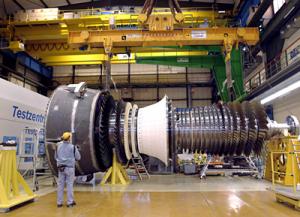
Gas turbine engines require numerous subsystems for it to start up. These subsystems must all work in tangent in order for the engine to stay running. These turbine systems tend to provide higher reliability and longer service life due to the rotation of their moving parts.
Gas turbine systems, when compared to a piston, have less moving parts and only move in one direction without the need to slow down, stop, and accelerate as pistons normally do. In turn, this frees the turbine system from any vibrations. This minimizes damage and wear on the system itself, extending its lifespan substantially.
In order for a gas turbine to start up, the first component that’s needed is an air flow, which will be combined with fuel and sparked to reach the idle stage. During this sequence it’s important that the pilot keeps an eye on the rates of the gas turbine engine as abnormally high rates can lead to the engine malfunctioning or even catching fire.
Today’s technology has led to gas turbine starting to be fully automated. This also provides a safer startup for both the engine and the user. Gas turbine engines also utilize dual ignition systems – same as a piston engine. Their life is indicative on how much energy is limited during use. Power output can therefore decrease when the engine is in constant use and is pushing itself. Conditions like snow, rain, or high winds may cause this decrease in power. Many systems have both low and high output igniters which are both used during the startup process.
A booster pump delivers fuel from the tanks to the engine driven pressure pump. The fuel must be delivered at a high enough rate to sustain operations under all types of conditions during flight. Also, a fuel cooled oil cooler is installed to prevent any moisture from freezing and blocking the systems or filters.
To regulate engine thrust, a fuel control unit controls the flow of fuel and also takes air density into account as well. Fuel flow needs to be compensated when flight conditions cause factors such as air temperature and altitude to fluctuate up and down. These factors move in synchrony with the air density, as there is no static density during flight.
These components all work together to start up a gas turbine engine. Aircraft technology continues to develop new ways to improve both stability and safety.